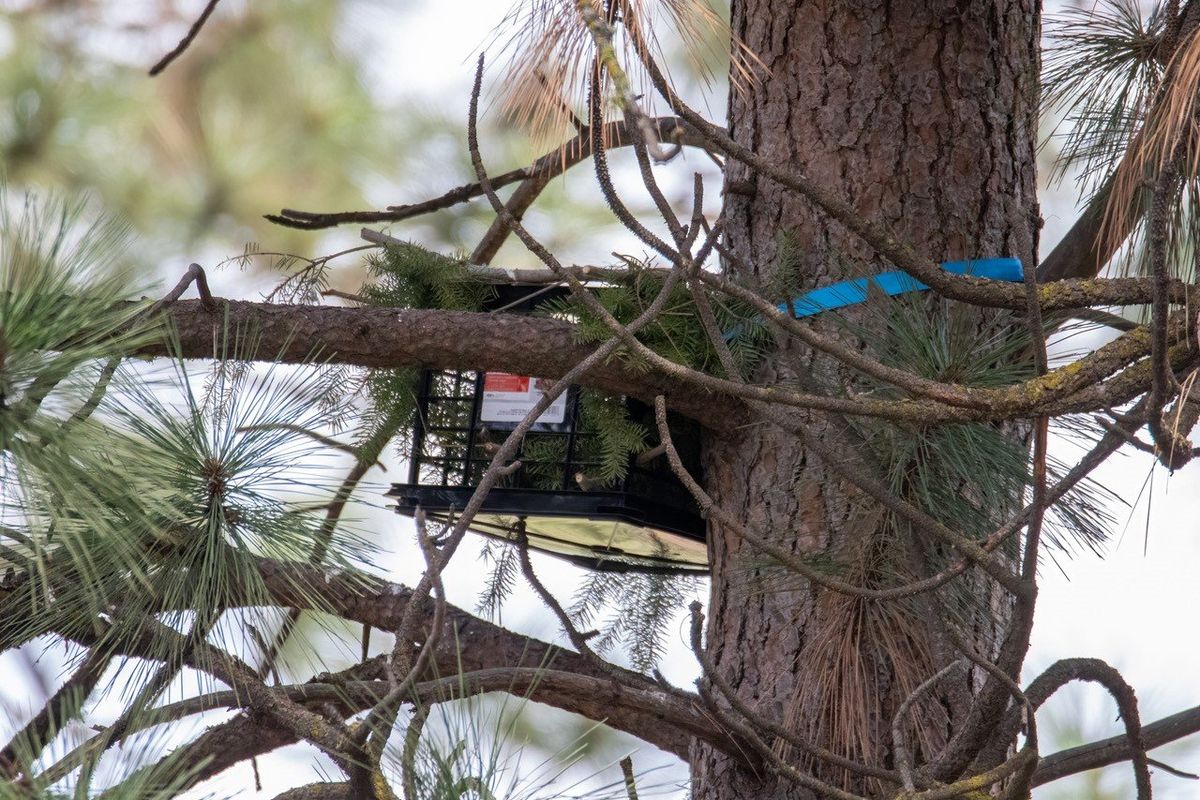Spokane Audubon’s ‘Save-a-bird’ program helps rehome owlets, other birds

Somewhere on Whitworth’s 200-acre campus last spring, a baby owl fell from its nest as a stiff wind blew it from the relative safety of home.
The baby great horned owl weighed just 1.5 ounces and, for all intents and purposes, was light as a feather.
Once on the ground – and uninjured – the owlet was at risk of being eaten by a predator or accidentally stomped on by a co-ed. While the owl could, if given the time and a measure of luck, claw its way back to its nest, in this particular case it didn’t have to.
That’s because Tina Penny intervened.
Penny, a volunteer with Spokane Audubon, scooped up the owlet and with the help of a nearby maintenance lift built the bird a nest in a tree on the Whitworth campus using an old milk crate. This year, that artificial nest is being used by possibly the same great horned owl parents, Penny said.
That rescue was the first conducted by the Spokane Audubon Society’s “Save-A-Bird Team.” The team started last year with the main goal of education. Volunteers also renest birds or in some cases transport them to a licensed wildlife rehabilitation centers.
“This Save-a-Bird team has been great as far as a network of volunteers to help transport, to help rescue, a network of veterinarians to help out,” Penny said. “We’ve been lacking that here.”
Penny learned the basics of rehoming from Washington State University’s Dr. Marcie Logsdon and brought that knowledge to the Whitworth Campus.
“It is a myth that if you pick up a bird, the parent will abandon them. Not true,” she said.
That said, she still wears gloves to protect against scratches and bites, and thick clothing, usually welding gear, in case the parents decide to dive bomb her. Penny first got involved working with raptors.
While adult great horned owls only weigh between 2.5 and 3 pounds, they’re ferocious predators and the first birds to nest in the spring.
That makes their babies particularly susceptible to strong spring winds, Penny said. The birds also don’t build their own nests, preferring to scavenge nests from other birds, all of which explains why they’d move into a milk crate.
Since the formation of “Save-a-Bird” more than 20 people have volunteered, either to rehome babies or help educate.
Calls tend to pick up in the spring when spring winds pick up.
As to the large significance of saving birds, Penny said that great horned owls are doing well, but every year there are more stresses on the animals. More homes. More traffic. Recently, a breakout of the avian bird flu.
So helping an owlet does have an impact.